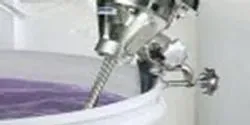Sample Preparation

Food manufacturers are playing a vital role in fighting food insecurity by adapting their current manufacturing practices to incorporate longer shelf life demands while maintaining high quality products that consumers enjoy. Find out about one method labs can use to maintain that high food quality.


Problem: In today’s laboratories, safe, efficient sample processing is essential to getting research answers faster. The centrifuge is a staple of these laboratories and critical to this sample processing. Often a shared resource in busy research facilities, the lab centrifuge can be a revolving door of multiple users with varying levels of experience and a range of applications, all requiring a variety of rotors. Yet, the centrifuge is technically complex and can be the source of lab mishaps if used improperly. These everyday challenges can keep lab managers up at night: Are all researchers trained on centrifuge use? Are they using the right rotors for their applications and is the centrifuge programmed with the correct application parameters? Are they ensuring the rotors are properly and safely secured in the centrifuge chamber to avoid any potential rotor accidents?

When it comes to common technology in a laboratory, centrifuges rise toward the top of the list. Centrifuges separate particles and structures suspended in liquid by applying thousands of gravitational force equivalents to the sample through spinning and play a role in a wide range of workflows and applications.











